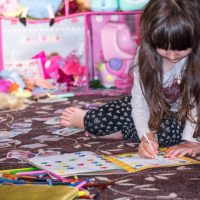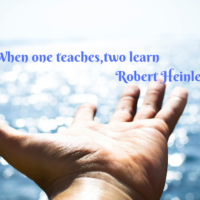How to teach imitation skills to improve children communication? Effective Communication strategies You need to know

Please note that this post may contain affiliate links and any sales made through such links will reward me a small commission – at no extra cost for you. PLEASE READ MY DISCLOSURE FOR MORE INFO.
Do you copy your child’s actions, gestures or sounds?
For some of us, this doesn’t come naturally, but many children who are non-verbal with autism need to be taught imitation skills and IMITATION is one vital, powerful learning tool for children. I will share with you today a few important things you can do to teach your child to imitate actions, sounds, gestures.
Why teaching imitation is so important in children communication?
Imitation is essential for every child’s learning process. From it, we all learn countless skills in all areas of development from language, non-verbal communication skills to learning how to do things, problem-solving, social skills…
It has been demonstrated that children with ASD have difficulty imitating (William, Whiten and Singh,2004) that varies by developmental level.
Being able to copy actions,behaviours is an efficient way of learning. Not only in childhood, it is also an effective method to acquire various skills in adulthood.
1.Teach imitation using toys/objects
• Observe your child’s play, be eye to eye level.
• Copy your child action
e.g: your child bangs a block on the table, COPY the action …..WAIT for a response …..if responding, REPEAT…..continue this back and forth imitation game.
Sometimes, it may take many sessions and toys (ball, car, truck )to get a response, try to be creative …..may use different toys that your child is interested in…and follow his/her lead.
•You INITIATE the action
-Choose an item that your child usually likes to play with (functionally, not repetitive play)
And for example, tap on the drum …wait ….if no response, then gentle use hand over hand assistance to model the action
SIGN UP to receive Your FREE
Preschool Rewards Chart

2.Imitate gestures and body movements
•Find a few of your child’s familiar, favourite nursery rhymes e.g :
“If you’re happy and you know it” or “Head and shoulders”
•Demonstrate at least one, two actions in each song such as “clap hands “ or “stomp feet”
•Pause and wait ….for your child to imitate the action before offering to assist hand over hand (offer minimal assistance and phase it out in a time when your child becomes more confident in performing)
3.Teach imitation using sounds
You can try this during the times of the day when your child is the most vocal and willing to interact.
Copy your child sounds ….WAIT for a response…if yes…you have the opportunity to imitate again …if not, wait until he vocalizes something else and tries again. It is important to be consistent and eventually your child will respond after you copy him … This is a great back and forth communication that teaches your child that he is important and his communication matters …which results in confidence and desire to try again.
Encourage filling in …..a familiar song
Choose a familiar song that your child likes such as “Twinkle, twinkle “
Sing it slowly and set some keywords such as the last word in each verse you may want the child to repeat (try to vocalize a sound) such as “Star”,” Are” High” Sky”:e.g “How I wonder what you……(Pause .)… “ARE”. Pause before each keyword and wait for your child to fill in or vocalize to continue the song.
Another idea would be to imitate exclamation sounds and facial expressions related to different routines such as “Ouch” when getting hurt Or “Mmmmm” or Yummy”
Conclusion
Teaching imitation to increase children’s communication is a process that takes time, but can be learned.
When planning this, here are some ideas to consider:
• Set one-two goals: e.g: teach imitation of using toys/objects
•Observe your child and see which activities/routine is enjoying the most (e.g: playtime with musical instruments)
• Model imitation with a toy, pause and wait for a response(up to 10-12 sec), then repeat and/or you initiate action such as taping on the piano, then wait for a response
Repetition and consistency in using a proven effective strategy is the key to learning, therefore is important to incorporate these ideas into the daily natural occurring routines (which are predictable, functional times of the day); for full information on this topic, please check my post “How Daily Routines can dramatically improve communication”









